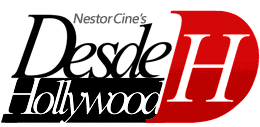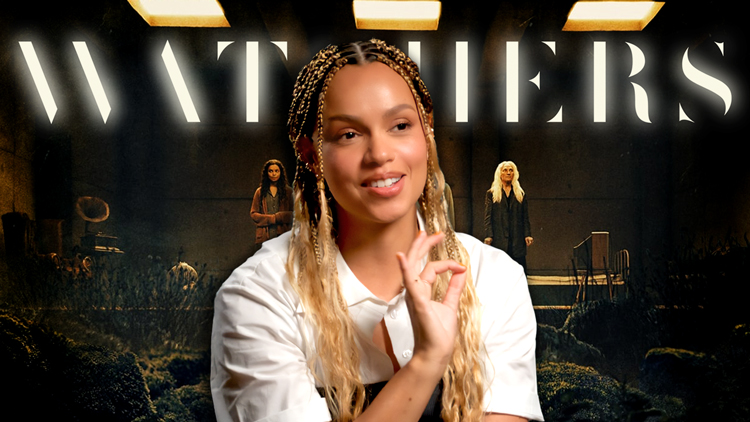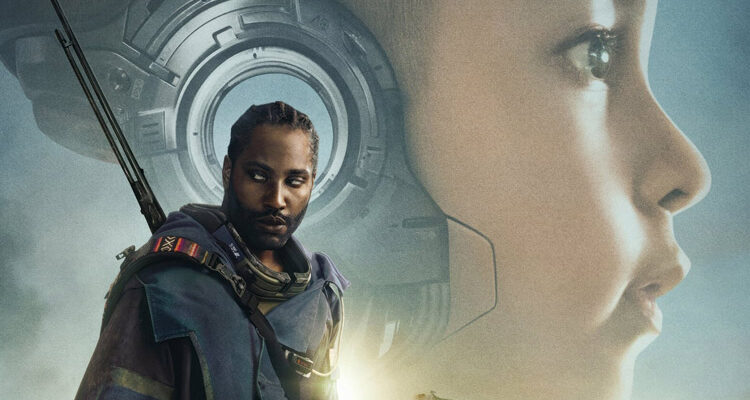After leaving his mark on the science fiction genre with films like Monsters, Godzilla and Rogue One, Gareth Edwards returns with an original, epic blockbuster titled THE CREATOR.
Desde Hollywood attended a virtual press conference with the talented ateur, where he discussed his filmmaking process, this timely story and much more.
The 20th Century Studios movie stars John David Washington, Madeleine Yuna Voyles, Gemma Chan, Ken Watanabe, and Allison Janney.
THE CREATOR opens in theaters this Friday.
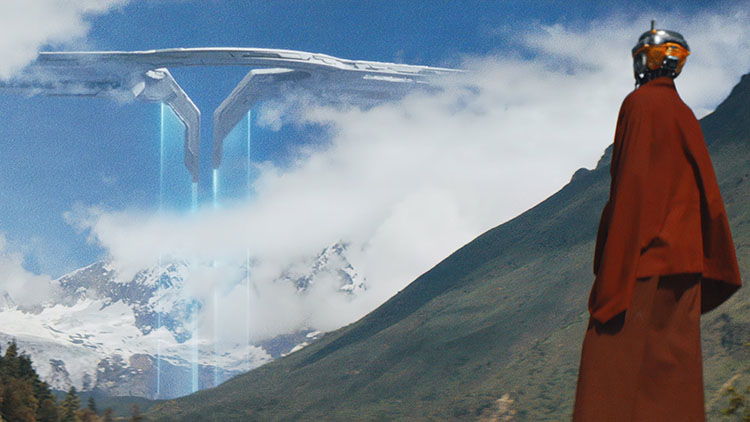
On shooting the film on actual locations, across different countries.
Normally, when you make a film like this, what happens is you design the world. You do all these cool pieces of artwork. You show a studio. They say, “You’ll never find anywhere that looks like this. You’re gonna have to build it in a soundstage. It’s gonna cost $2 hundred million, and you’ll shoot it against greenscreen.” And we were like, “No, no, no, no, no, no, no.” Like, forget the literal images. This is just the idea. We’ll design it based on whatever we actually film. So, we’ll do all the design, like, when we finish the movie. Like, we’d sort of make the movie in reverse.
We ended up saying, like, “Just let us go make the film.” If you get the crew small enough, the cost of the crew is so little that it’s cheaper to fly them anywhere in the world than it is to build a set. And so, suddenly, the idea of, like, picking every single best location based on the scene became a reality. And so, we cherry picked, like, the volcanoes of Indonesia, you know, Buddhist temples in the Himalayas, you know, ruins of Cambodia and floating villages and all this.
We went to eight different countries and shot the movie a lot more like an independent film, to some extent. And then when it was all finished, we had, you know, a big chunk of the budget for Industrial Light and Magic and some other vendors. Basically, we edited the film, got frames from each shot in the movie, and gave them to the Production Designer and the concept artist. And what normally happens a year and a half earlier was then happening during the edit. And they were painting and designing all the sci-fi just on the shots we were actually using.
So, you never paint to the left or the right of the frame, so everything’s really efficient. You only use what you see. Everything that I like about the movie is a result of doing it differently. And so, I just feel super excited. It feels like I never wanna go back to the other way of making a film, basically.
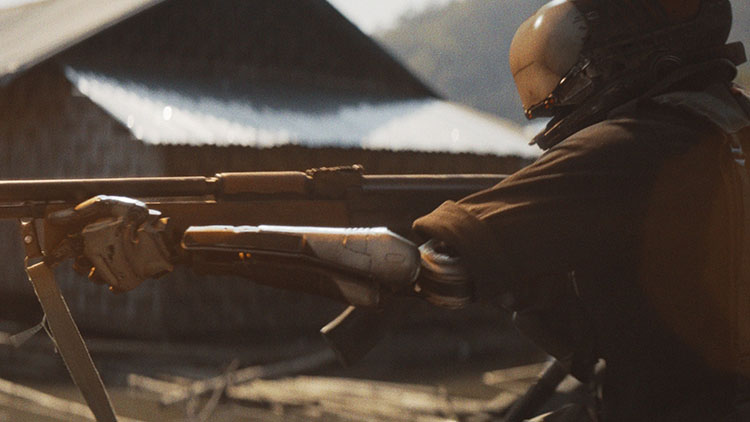
On filming “guerrilla style” in a remote village in the Himalayas.
Much to the annoyance of the people who wanted to have a holiday in Nepal, we didn’t take the sound crew for that little shoot, ’cause it was so remote. Everything in that village has to travel, like, be carried by hand for four days. We flew in on a helicopter, thankfully. And so, yeah. So, we were there for about three days and it was I think over 10 thousand feet. So, you got, like, altitude sickness and things like that, which was a bit surreal.
Everyone in the movie is actually villagers from the little village by, like, the Buddhist temple. And some of the kids agreed to shave their heads and play some of the robot monks in AI and stuff. It was kinda surreal. Like, you think there’s gonna be a problem, but they all get really excited about being, like, in a Hollywood blockbuster.
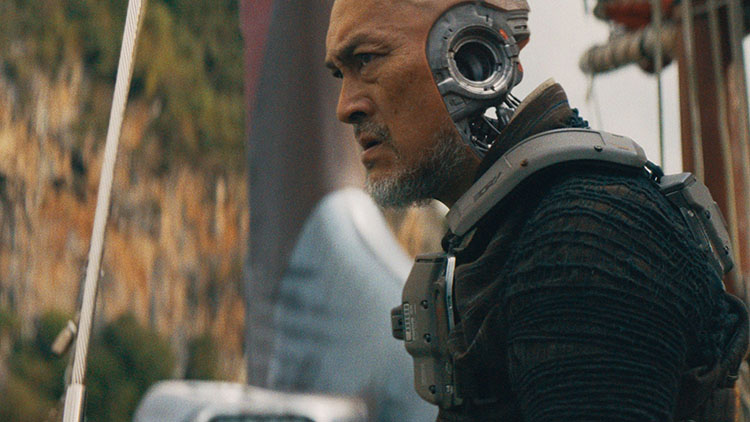
On Edward’s science fiction influences and the power of the genre.
Growing up with Star Wars and being promised this amazing world with spaceships and robots. And then you kind of realize it’s not true and that’s not gonna happen.
And so, the second-best thing is, like, I’ll become a liar, like George Lucas, and I’ll create these, like, you know, stories for kids to grow up with. But then the other main reason is my favorite TV show growing up was The Twilight Zone, you know, the Rod Serling in black and white TV show. And what’s so good about those stories is they change one aspect of real life. Like, basically, you can live your whole life and have certain set beliefs. They never really get challenged because nothing really happens out of the ordinary. And so, you think, you know, everything you believe about the world is correct.
And you can live and die and have the same views the entire time. But when you change some aspect of the world to be, like, an extreme, like, one element just gets flipped on its head, whatever it may be, you suddenly realize a lot of the things you thought were true start to not work and be wrong. And it makes you question, like, what your beliefs are. And I think that’s the best kind of science fiction. And so, like, in this, we were using AI as a kind of metaphor for people who are different to yourself. And that’s how it started. But then obviously in the last year or so, it’s become quite a reality. And it’s gotten very surreal.
The film that probably had one of the biggest impacts on me as a kid was Steven Spielberg’s ET. And as a kid, I went in, all I wanted to see was an alien and a spaceship, you know, and BMX’es. And then I got absolutely moved to tears on this, like, emotional journey with the two of them.
I feel like that’s the goal, every movie you make, you know, you don’t say this out loud because you set yourself up for failure. But, like, if you don’t make, you know, some people well up or cry, then you’re not really abusing, like, the power of cinema. And so, like, it’s always the secret goal when you write a film, is to do something that affects people emotionally. But yeah, I mean, it’s up for other people to say if you are successful or not, I guess.
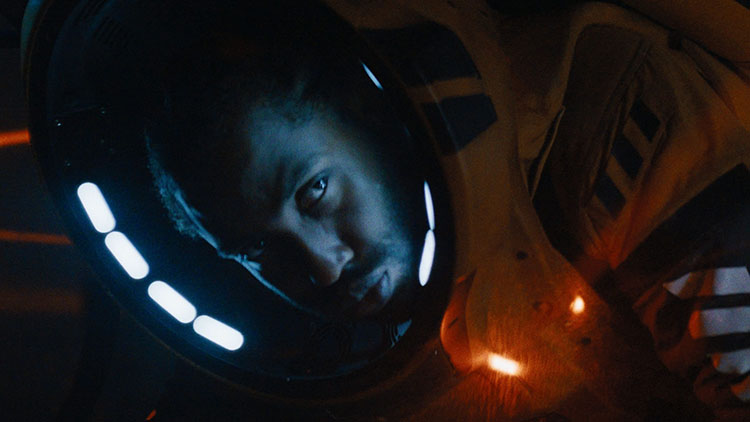
On crafting a story with Artificial Intelligence at its center.
I started writing this in 2018, when AI was up there with flying cars and living on the moon. You know, it was like, something maybe you would see in your lifetime, probably not. And so, I sort of feel like every major technological breakthrough that’s happened in the last century or so, like electricity, computers, the internet, they always have seismic, like, changes in industries. And you know, like, there’s a big bump in the road that we have to get over.
But on the other side of it, when the dust finally settles, I think we all look back and go, I’m glad we have electricity. You know, I’m glad we have computers. I’m glad we have the internet. And I think this will be another one. Like, the next few years or more will probably be a little tricky. But I think the upside, it’s such a powerful tool that’s gonna just help so many things in the world, that I think the positives are gonna outweigh the negatives. And I say that because when the robot apocalypse actually happens, they’ll have this recording and they’ll know. And I’ll be, like, left. You know, I won’t be enslaved like you guys, so.
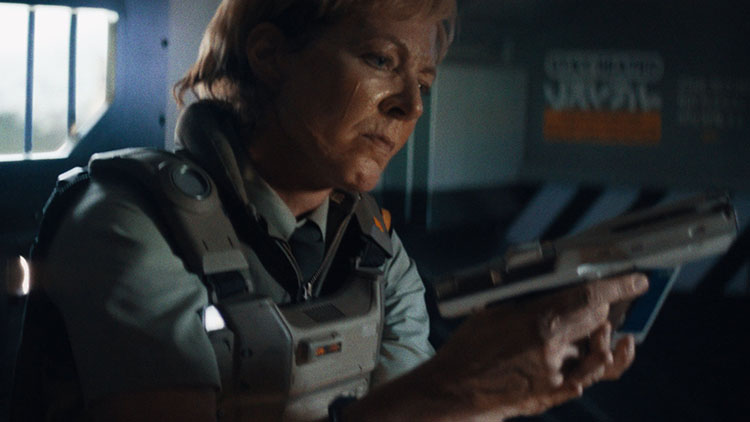
On the freedom of using smaller, more lightweight cameras than usual in these kinds of films.
I hope it becomes an industry standard for cameras to get lighter. I don’t think there’s any cameraman in the world that enjoys holding these really heavy bricks hours on end. I’m a bit of a wimp, so I was looking for a very lightweight, small camera.
And it just so happened that just as we started filming, about a year before, things got really interesting with camera technology. And for anyone who remembers film in the camera, I don’t know if you remember, but the way they measured the sensitivity to light, it was like a hundred ISO, or two hundred ISO. And if you were in an interior space that was a little dark, you’d have an eight hundred ISO. Well, these new cameras shoot at 12,800 ISO. And so, you can basically film in moonlight.
So, the second you can do things like that, we’re all familiar with LED lights, right? At home, like battery things. Even your phone is pretty bright. It’s like, so basically lights now are so bright and the cameras are so sensitive, you don’t need all these giant cranes and lighting. And so, just like you’d have on set, someone holding a pole with a microphone, we thought, let’s have someone with a pole and a light.
That way, as the actors are given freedom to sort of go any direction they want, and I can quickly move with them, the lighting can quickly change in an instant. And so, instead of waiting 10, 20 minutes to change the lighting all the time, we were waiting three seconds. And so, we did, like, 30-minute takes, where we wouldn’t stop for 30 minutes. And got all this material as a result, I think, that’s very naturalistic, at times, very organic, and doesn’t feel like your average blockbuster, which I think really helps all the science fiction of it all.
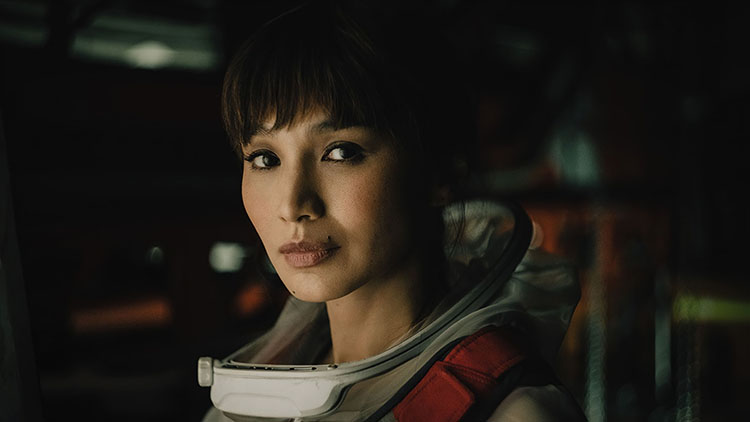
On casting John David Washington as the co-lead of the movie.
There’s a tendency in this kind of movie to become a tough guy, you know what I mean? You’re the hero and you know, you never show any, like, weakness and all this sort of stuff. And I’m not really into those films. I never feel like any vulnerability for the character, who’s always gonna be fine. And so, I wanted to see cracks in the armor. Like, I wanted a moment in the film where, when people left the room and it’s just him, he’s not okay.
Whether he cries or whatever, but he is broken. And around other people, he acts fine, but it’s all, you know, putting on a front like, you know, we all do, to some extent. And so, I wanted an actor that wasn’t afraid to go there like that. And he was really into that idea. And then him and Madeleine, we both agreed that the most important thing on the film when the camera wasn’t rolling was that Madeleine and him became best friends.
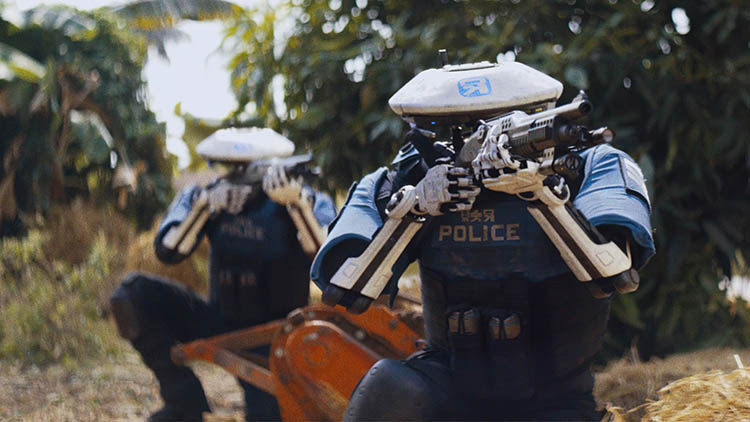
On setting up the story as the United States versus New Asia.
I did actually try lots of different permutations, like Europe and, you know, South America. And it just became the most simple, clearest way to split the world in two. And I had been on holiday as a little kid to Asia and it sort of blew my mind. And one of the big tricks that I think George Lucas did so well, and I sort of learned a lot from Star Wars when we were doing that, was that he takes things from that, like, the distant past, like, spirituality, religious stories, mythology, and then puts them with things in the far future, like spaceships and robots. And there’s nothing in between. It’s literally like the far past, the far future, and he kind of, like, wedges them together. And more than anywhere else in the world, I think where that happens the most is in, like, Southeast Asia.
You essentially end up in these places like Hong Kong or Bangkok or Tokyo, where you’re in, like, a metropolis that looks like something from Blade Runner, but if you just go down that street and take a left, there’s a little temple and a Buddhist monk. And I love those polar opposites, those visual contrasts. You know, I don’t know. I just find them super exciting. Like, there’s sort of energy in that, like a battery, like a positive and a negative. And you’re always looking for that as a filmmaker, in stories and visuals, you know, every aspect.
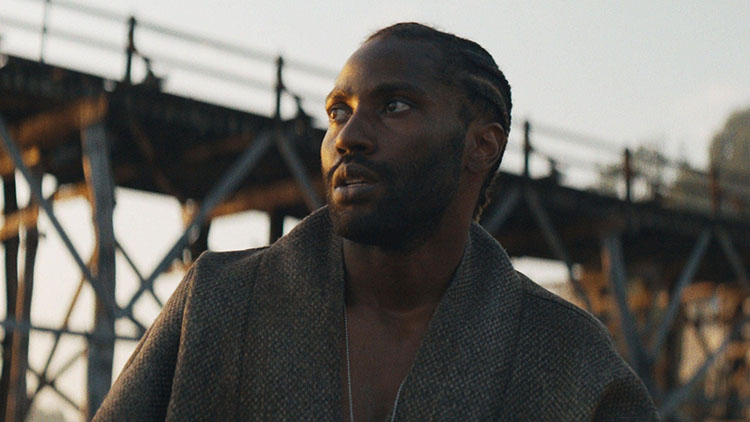
On Edwards seeing a movie not as a play, but as a dream, and the importance of visual bibles.
My favorite moments in cinema are like, really cinematic moments, whatever they may be.
If you read the screenplay for those movies, those moments wouldn’t stand out on the page. They’re things that are, like, nonverbal, like music and sound design and cinematography, and it gives you goosebumps. But on a screenplay, it’s just another moment. It doesn’t come across that great. What works really well in screenplays is people kind of arguing or having clever banter, conflict with each other in dialogue, like a stage play. And so, personally, I’m not a fan of screenplays as, like, the foundation for the film, because it doesn’t capture, like, most of the reasons I wanna make the movie.
And so, one of the things I do at the very beginning is I just create, like, a visual bible. So, for each scene in the movie, there’s just a stack of imagery that’s like, this is what this scene is gonna feel like. And then there’s music. I create a playlist of music, and this is the music I’d like to use for this section of the film. Stuff like that. And it’s actually, I find it’s more useful when bringing people on. I just, you know, dump me all that material. And they suddenly go, “Oh, okay, I get it now.” You know, but like, just scripts on their own, quite limiting, I think, for, like, being the proof of concept of something that’s a very audiovisual experience.
THE CREATOR opens in theaters Friday, September 29.
As a future war between the human race and artificial intelligence rages on, ex-special forces agent Joshua is recruited to hunt down and kill the Creator, the elusive architect of advanced AI. The Creator has developed a mysterious weapon that has the power to end the war and all of mankind. As Joshua and his team of elite operatives venture into enemy-occupied territory, they soon discover the world-ending weapon is actually an AI in the form of a young child.
